History: Magnolias around Bishop McTyeire’s grave

Bishop Holland McTyeire in about 1875. Methodist Publishing House via Wikimedia commons
In March of 1873, Bishop Holland McTyeire convinced Cornelius Vanderbilt to contribute half a million dollars to found Vanderbilt University. In May of that year, he negotiated the purchase of several tracts of mixed residential and farm land located on a small hill west of Nashville. Bishop McTyeire served as president of the Board of Trust for life as part of the conditions stipulated by Cornelius Vanderbilt. McTyeire lived in the Beech house (now called “Old Central”) while the main campus building (“Old Main”; now Kirkland Hall) was constructed. He immediately began to shape the character of the campus through a massive tree-planting campaign. All around Old Main (the only academic building on campus at that time), McTyeire supervised the planting of hundreds of small trees. In a letter dated November 24, 1873, he reported to Vanderbilt that he had 200 trees planted around the grounds that month.
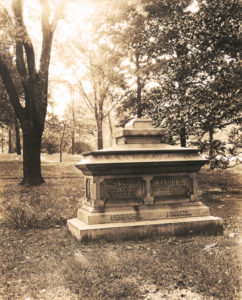
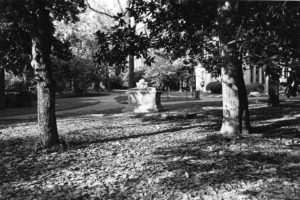
After McTyeire passed away in 1889, he was laid to rest in a grave in a part of the campus known as “Bishops Common”. He was buried alongside two other Methodist Bishops, William McKendree and Joshua Soule, whose bodies he had caused to be reinterred to the campus in 1876. McKendree and Soule were pioneers of early Methodism in Tennessee.
The tombstone that is currently on the site is not his original headstone. That stone, now located in the stairwell of the Office of the University Chaplain and Religious Life, was probably replaced by the current gravestone sometime between the death of McTyeire’s wife Amelia in 1891 and the death of Chancellor Garland in 1895.
To this day Bishop McTyeire, as noted by Chancellor Kirkland in his 1893 inaugural address, “under the shade of magnolias that his own hand planted, he sleepeth well”. McTyeire would probably smile if he knew how much his tree planting campaign would shape the university’s identity and future as an arboretum. Bishop McTyeire’s legacy lives on today in the beautiful trees that grow all across Vanderbilt’s campus bringing joy to squirrels and students alike.
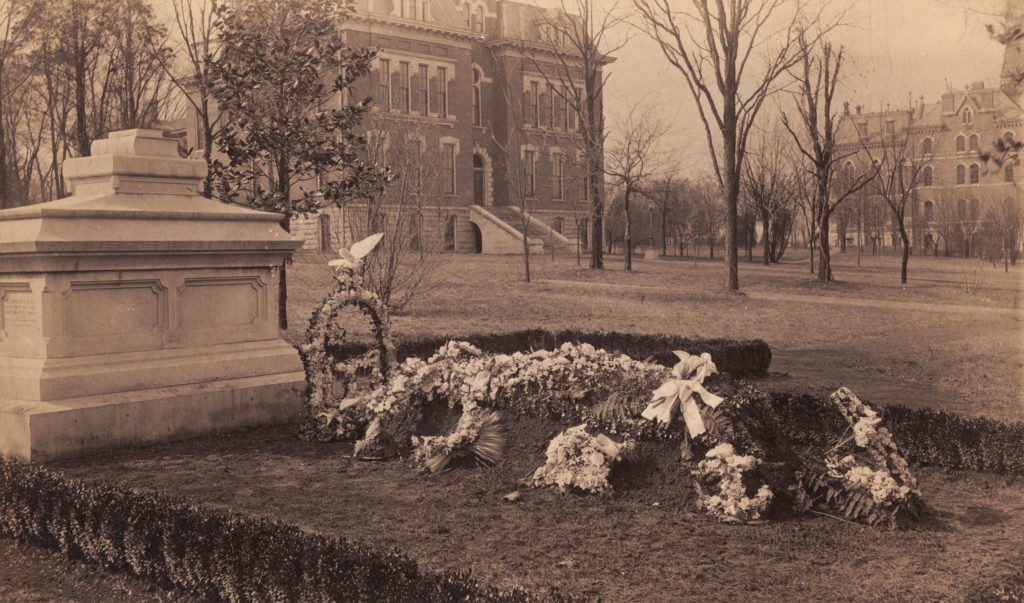
Young magnolia 2-482 can be seen behind the gravestone in this 1895 image taken soon after Chancellor Garland’s burial. Vanderbilt University Special Collections and University Archives photo PA.CAF.GRAV.001
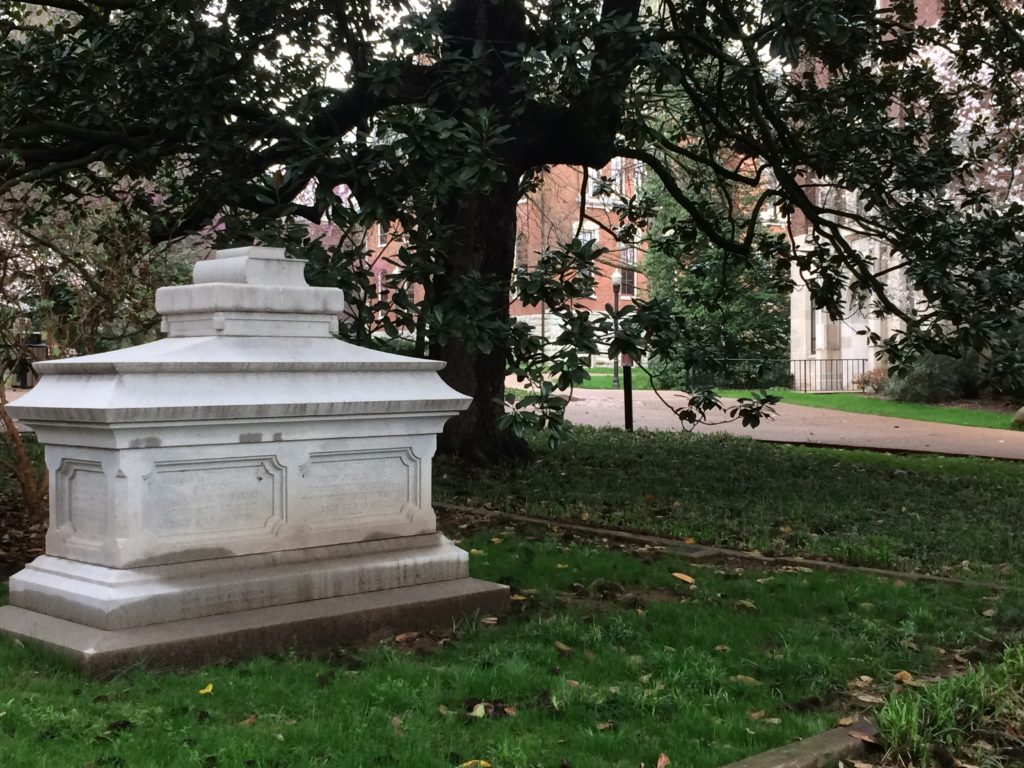
Magnolia 2-482 from the same vantage point in 2020, 125 years later. Photo by Steve Baskauf under a CC0 license.
Magnolia 2-482 on the left side of the grave had a diameter of 85 cm (34 in.), height of 19 m (62 ft.), and crown spread of 21 m (70 ft.) when measured in 2015. That gives it a tree size score of 185 points.

Magnolia 2-663 in the 1930’s at about 40 years of age. Its characteristic split trunk is noticeable. Vanderbilt University Special Collections and University Archives photo PA.CAF.GRAV.005
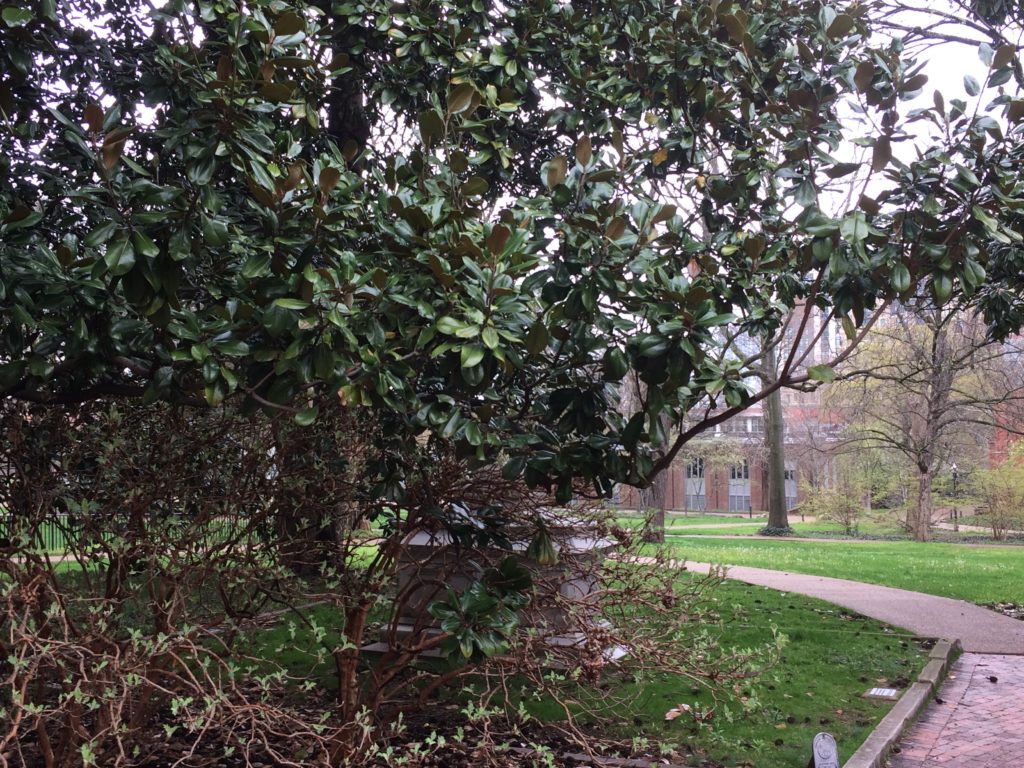
Magnolia 2-663 from the same vantage point in 2020. Photo by Steve Baskauf CC0 license.
Magnolia 2-663 on the left side of the grave had a diameter of 109 cm (43 in.), height of 19 m (61 ft.), and crown spread of 16 m (52 ft.) when measured in 2015. That gives it a tree size score of 209 points.
Return to the historical tree tour page for magnolia 2-481. Go to the tree page for magnolia 2-663.